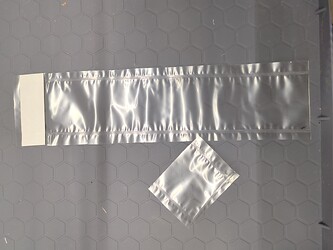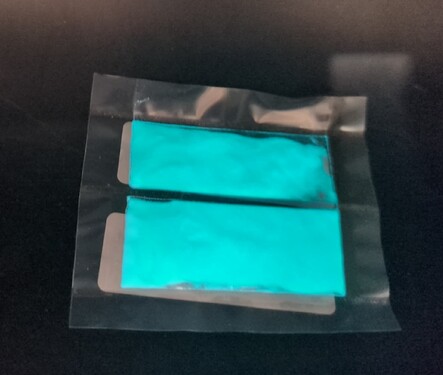Let’s take a moment to discuss a few things:
- Use of glow powder for tattooing or making tattoo ink
- Dry heat sterilization sleeves
- Two Chamber Sleeves
Do Not Use For Tattooing!
We launched our biosafe Glow Powder line in July 2025, and almost immediately professional body artists of all types saw the potential. Almost immediately, we began getting inquiries from professionals about the availability of tattoo inks. While there are “glow in the dark” tattoo inks available now, they are direct phosphorescent inks which only fluoresce (“glow”) when directly under UV light. Our glow powder “charges” with UV light but then remains glowing for a very long time. Unfortunately, you should not make tattoo ink using our glow powder.
TL;DR
The TL;DR here is - do not make tattoo inks using our glow powder. It will only shred your needles and potentially cause physical harm to your customer.
But why?
The 50 micron powder is primarily strontium aluminate with some doping elements mixed in. The powder is phosphate passivated, which makes the powder extremely resilient to bodily fluids. The process of tattooing will break open these particles, exposing unpassivated molecules of strontium and aluminum, while at the same time effectively “sanding down” your tattoo needles. This abrasion produces the following;
- Particles of metal from your needle and potentially cracked pieces of glow powder which are much smaller than 50 micron (more on why this is a problem later).
- Dispersion of metal and glow powder particles throughout the body, leaving a visible grey dull metallic stain on the skin and deeper tissues.
What about suspension oils, etc. ?
We are working with professional chemists on a solution for tattooable glow ink. Eugenol (clove), glycerin, witch hazel, various glycols, etc. If you can think of it, we’ve probably tried it. In a lab. Under proper test conditions. With proper test equipment. We are now moving on to more exotic medical coatings and other ideas.
Why is particle size important?
Particles about 20 micron and smaller can start causing problems;
- triggering macrophages
- traveling through ECM pores
- passing through membranes
Our powder has been chemically washed and carefully sifted through lab grade filters to ensure it’s 50 micron (or larger).
Tattoo inks with TiO2
This concern comes from studies done on traditional inks containing titanium dioxide (like white pigments) causing excessive wear and abrasion of tattoo needles, promoting both TiO2 migration as well as steel, iron, cromium, and nickle. Here is one such study;
Distribution of nickel and chromium particles from tattoo needle wear (3.2 MB)
Dry Heat Sterilization Sleeves
The pouches don’t look similar to typical paper sleeves for EO, gas plasma, and autoclave sterilizations. These should not be autoclaved–they are only rated for dry heat. While we could have continued to use the sleeves we were, they have a lower max temperature so switching allows us to speed up the process and ensure thorough sterilization using higher temperatures.
Two Chamber Sleeves
We are transitioning to this style. One chamber has two grams for the work while the other has one for topping up during aftecare. Keep in mind you’ll want to be opening these sleeves with sterile tools. Green is currently shipping in these. We will be sending out the single chamber versions for aqua until we run out unless you ask otherwise in the order notes.


